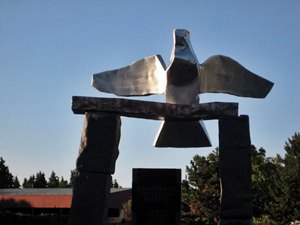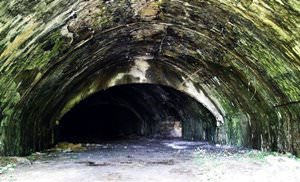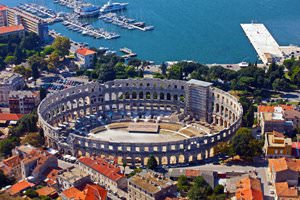
Croatia is not only a fashionable resort for beach holidays. There are various museums and monuments, ancient castles and fortresses in the country. Most of the museums are located in the capital city, Zagreb. One of the largest and most interesting is the Mimara Art Museum with a collection of world-class art. The museum features works by famous artists Van Goyen, Velasquez, Goya, Manet, Degas, Renoir, Delacroix, Lebrun, and Lorren. In the Modern Gallery in Zagreb, visitors will be able to visit exhibitions that feature more than 10 thousand works of 19-20 centuries, mainly by Balkan artists. There are about 400 artifacts in the archaeological museum, among which the world's only flax book of the ancient world can be seen. In an unusual museum of broken hearts, tourists will be able to see an exhibition of objects that once belonged to separated couples.
The best hideaways for couples in love, as well as top hotels for wedding and honeymoon.
Read further
Split is one of the oldest cities in Croatia, so travelers can not only visit the most amazing museums, but also get acquainted with architectural monuments. One of the main attractions of the city is the palace of the Roman emperor Diocletian, built in the 3rd century. The palace occupies an area of about 3 hectares. The temple of Jupiter, several ceremonial halls, and a mausoleum survived to these days. Buildings were constructed of brick and faced with white marble. The facade was decorated with sphinxes, which were specially brought from Egypt. The ruins of the ancient city of Salon, founded in the 4th century BC, are in the suburbs of Split. In the Museum of Croatian archaeological monuments you can see a huge number of exhibits that date back to ancient times, including sculptures, whose age is more than ten centuries.
A lot of discoveries await at the Istrian peninsula, which is one of the most popular resorts. A huge number of monuments of architecture is located in the largest city of the peninsula, Pula. The city was founded by ancient Romans. An amphitheater that was built 2 thousand years ago, has perfectly survived there. It still hosts major events and concerts. In Porec, it is worth to visit the Euphrasian basilica, built in the 6th century, and the ancient Roman temple of Neptune. Otherwise, tourists may just stroll through the streets of the downtown. The old part of Rovinj that is rich in monuments of Romanesque style, is worth a look too. The city museum is set in a beautiful building in the Baroque style. An amazing exhibition is represented at the premises of the Franciscan Monastery. One of the most recognizable cities in Croatia is Dubrovnik, which is known for the old part of the city located on the steep shore of the Adriatic Sea. The central part for walks is Stradun Street, which is lined with limestone. There are numerous shops and sights on it. It is worth to visit the Princely Palace, built in the 15th century. The mansion is designed in a mixed Gothic and Renaissance style; the building has very impressive bas-reliefs. Another monumental structure of the old part of Dubrovnik is the Franciscan monastery of the 14th century, which has a rich courtyard. Next to it, there is the Great Fountain of Onofrio, which was a part of the water supply in the old city. Dubrovnik has numerous amazing museums. One of them is Rupe Ethnographic Museum, located in the building of a huge granary. Copyright www.orangesmile.com
Hotels in Croatia are among the most stylish in Europe. They are affected by the neighborhood with Italy, the capital of the world fashion. …
Read further
The archaeological museum in Zadar is one of the largest in Dalmatia. Its exposition consists of three parts. The ground floor of the building features collections of the Middle Ages; the second has a collection of the times of the Roman Empire, and the third displays art of prehistoric times. The collection of the Roman Empire embraces weapons of the Roman army, household items, and statues. Another cultural center of the country is the city of Rijeka. It contains a large number of historical attractions, such as the leaning tower of the Venetian building, the Capuchin Church, the Modello Palace, and the old Roman gate. Tourists will find it interesting to visit the Pomor Museum and the Museum of Modern and Contemporary Art.
 Croatia is not only a fashionable resort for beach holidays. There are various museums and monuments, ancient castles and fortresses in the country. Most of the museums are located in the capital city, Zagreb. One of the largest and most interesting is the Mimara Art Museum with a collection of world-class art. The museum features works by famous artists Van Goyen, Velasquez, Goya, Manet, Degas, Renoir, Delacroix, Lebrun, and Lorren. In the Modern Gallery in Zagreb, visitors will be able to visit exhibitions that feature more than 10 thousand works of 19-20 centuries, mainly by Balkan artists. There are about 400 artifacts in the archaeological museum, among which the world's only flax book of the ancient world can be seen. In an unusual museum of broken hearts, tourists will be able to see an exhibition of objects that once belonged to separated couples.
Croatia is not only a fashionable resort for beach holidays. There are various museums and monuments, ancient castles and fortresses in the country. Most of the museums are located in the capital city, Zagreb. One of the largest and most interesting is the Mimara Art Museum with a collection of world-class art. The museum features works by famous artists Van Goyen, Velasquez, Goya, Manet, Degas, Renoir, Delacroix, Lebrun, and Lorren. In the Modern Gallery in Zagreb, visitors will be able to visit exhibitions that feature more than 10 thousand works of 19-20 centuries, mainly by Balkan artists. There are about 400 artifacts in the archaeological museum, among which the world's only flax book of the ancient world can be seen. In an unusual museum of broken hearts, tourists will be able to see an exhibition of objects that once belonged to separated couples.




